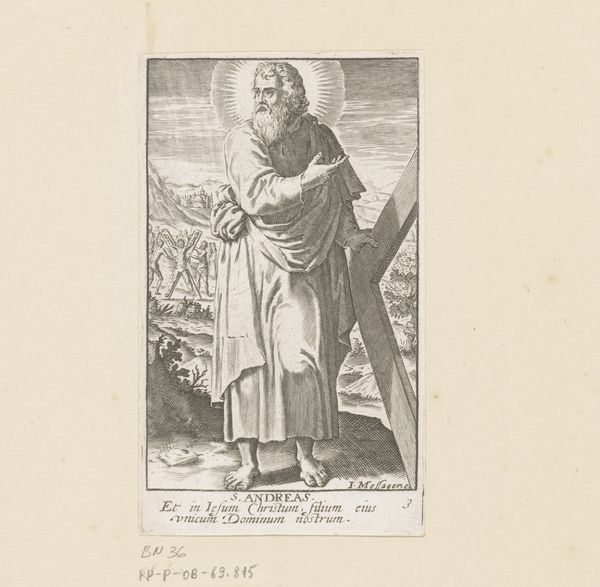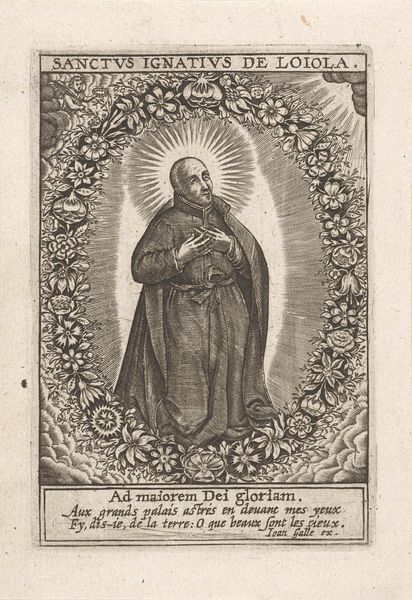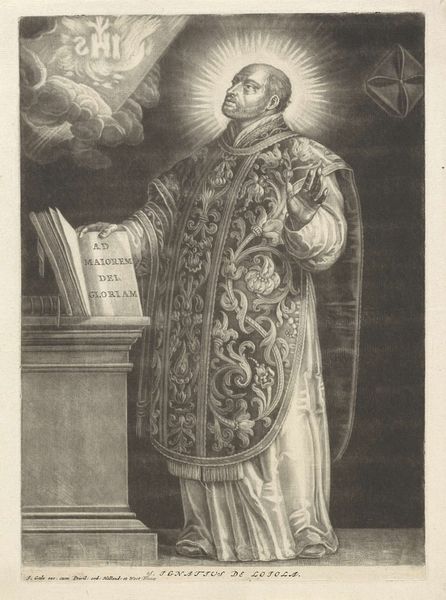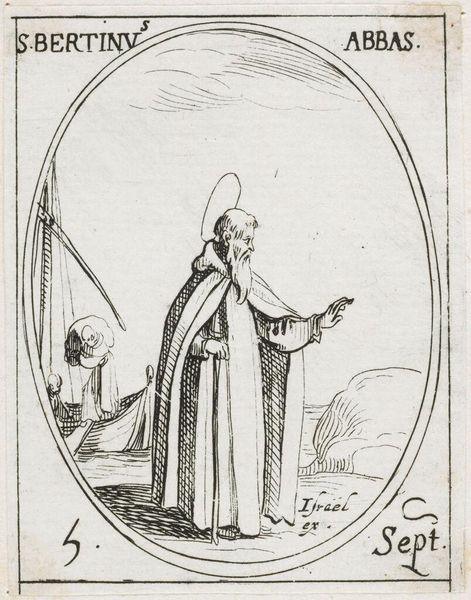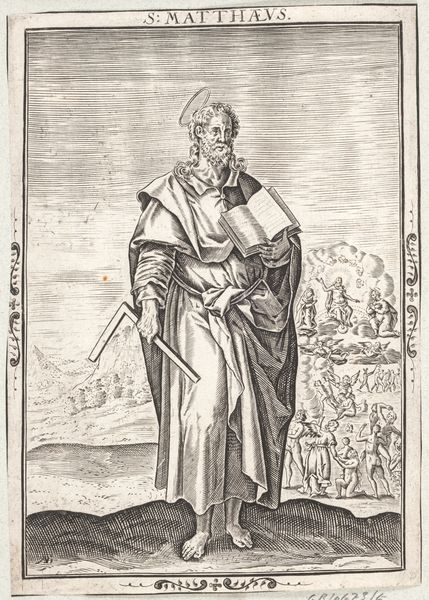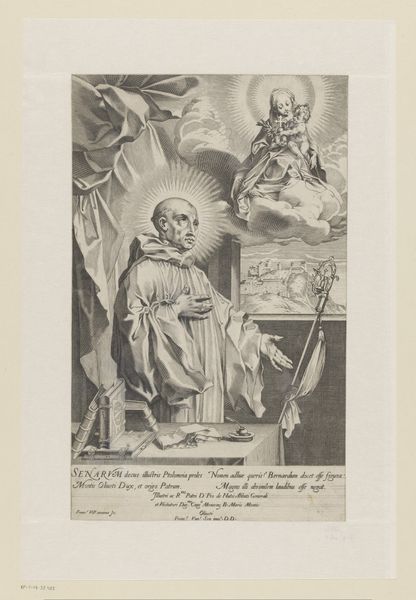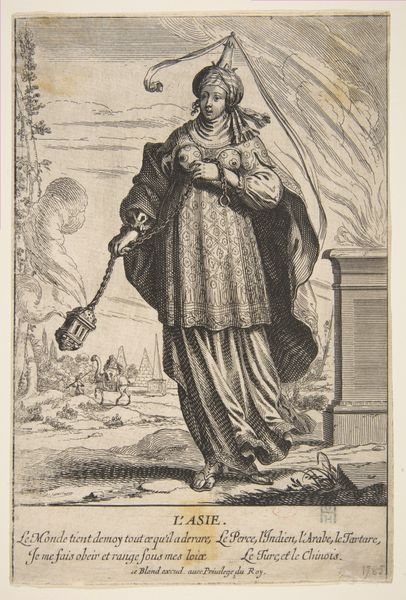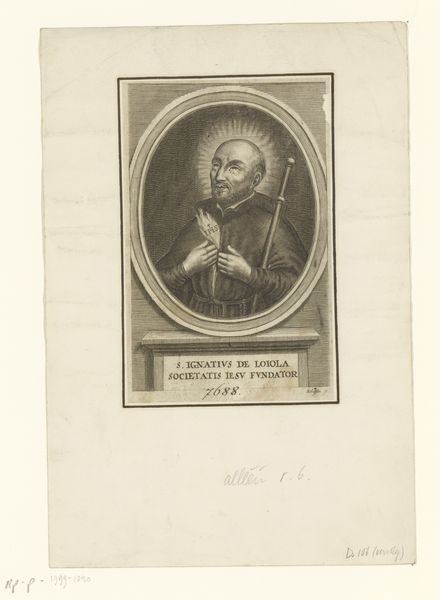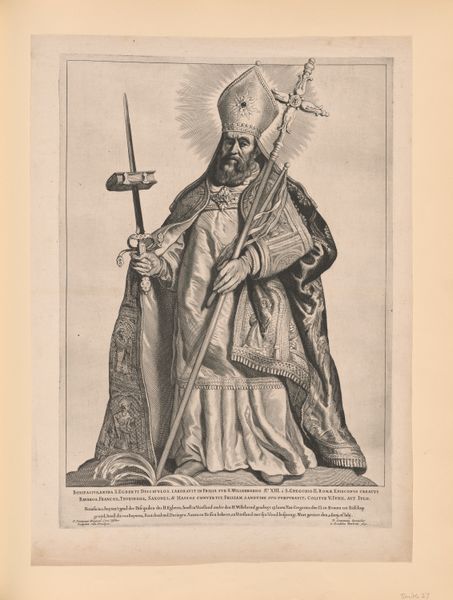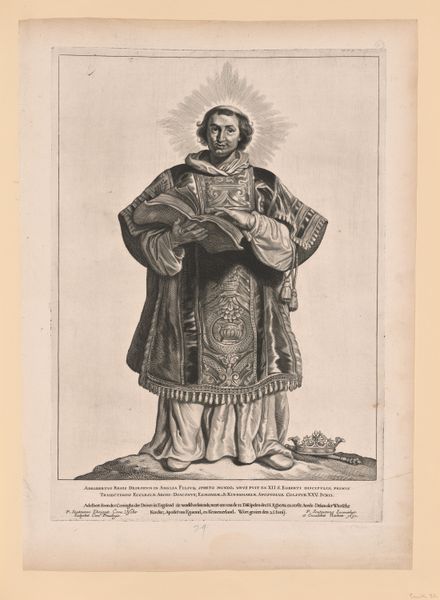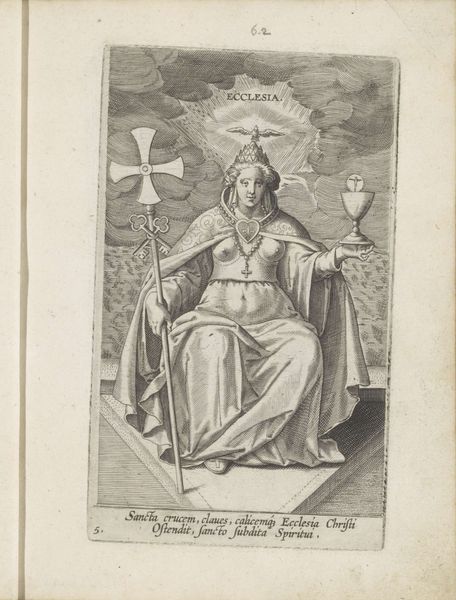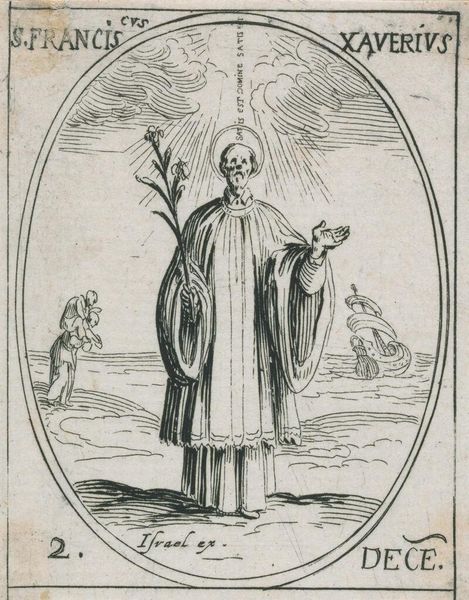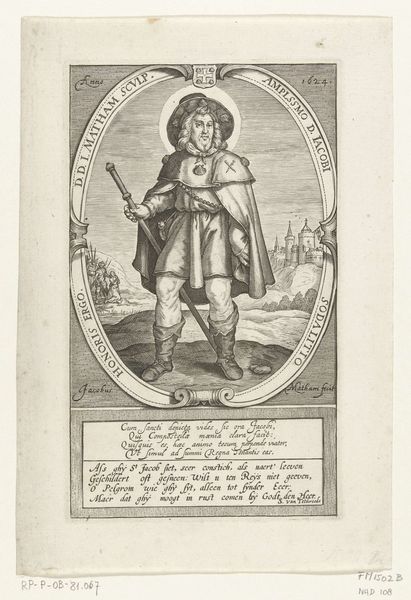
engraving
#
portrait
#
baroque
#
old engraving style
#
engraving
Dimensions: height 401 mm, width 278 mm
Copyright: Rijks Museum: Open Domain
Theodor Matham’s “H. Ignatius van Loyola” is a print made using engraving techniques. This process involves using a tool called a burin to cut lines into a metal plate, which is then inked and printed. The choice of engraving significantly impacts the image's appearance. The fine, precise lines create intricate details, capturing the texture of Ignatius' robes and the ethereal quality of the surrounding light. The labor-intensive nature of engraving is worth noting. Each line had to be carved by hand, reflecting a tradition of skilled craftsmanship. But this wasn't necessarily "art for art's sake". Prints like this were often commissioned for devotional purposes, or to spread specific ideologies. The print medium itself enabled mass production and distribution, aligning with the expanding networks of communication and commerce during the period. It’s a fascinating convergence of meticulous handwork and the early stages of visual mass culture. Appreciating this piece involves recognizing the intertwining of material, process, and social context, blurring the boundaries between craft, art, and propaganda.
Comments
No comments
Be the first to comment and join the conversation on the ultimate creative platform.
